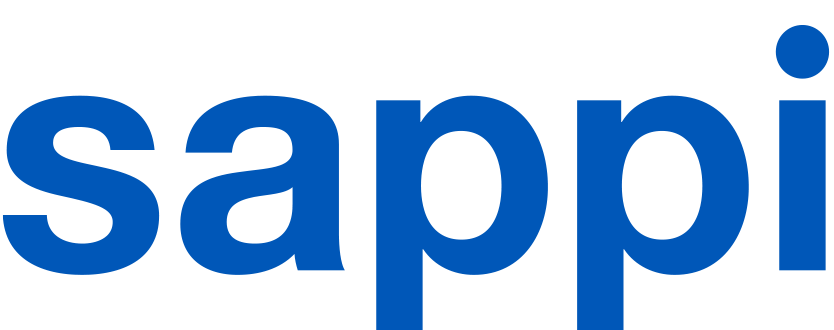
-
Products & Services
- Services
Education and support
 Education and supportCreative resources to learn more about paper, printing and everything in between.
Education and supportCreative resources to learn more about paper, printing and everything in between. -
Sustainability & Impact
Fresh Facts on Fresh Fibre
 Fresh Facts on Fresh FibreLearn how to choose between fresh and recycled fibre for your next project.
Fresh Facts on Fresh FibreLearn how to choose between fresh and recycled fibre for your next project.The Power of Trees
 The Power of TreesWhere the power of trees meets the strength of Sappi.
The Power of TreesWhere the power of trees meets the strength of Sappi.Product CoC Claim Options
 Product CoC Claim OptionsYou should be confident in your supplier’s approach to sustainability.
Product CoC Claim OptionsYou should be confident in your supplier’s approach to sustainability. -
Innovation & Collaboration
Sustainable alternatives to plastic
 Sustainable alternatives to plasticUsing cellulose and woodfibre from trees
Sustainable alternatives to plasticUsing cellulose and woodfibre from treesPartner with us
 Partner with usWorking with brands to develop sustainability solutions
Partner with usWorking with brands to develop sustainability solutions -
News
- Events
COVID-19 Resource centre
 COVID-19 Resource centreCentral Resource Centre for all COVID-19 info
COVID-19 Resource centreCentral Resource Centre for all COVID-19 info -
About us
Research and development
 Research and developmentWorking on tomorrow’s solutions.
Research and developmentWorking on tomorrow’s solutions.2023 Sappi Annual Integrated Report
 2023 Sappi Annual Integrated ReportContinually shaping our business.
2023 Sappi Annual Integrated ReportContinually shaping our business.

The Houston-based design firm, Rigsby Hull, conducted a great deal of research to support the content and design of Sappi North America’s latest educational promotion, Haptic Brain, Haptic Brand: A Communicator’s Guide to the Neuroscience of Touch. Beyond the research that led to their encounter with historical imagery (Rigsby Hull used the images from Atlas d’Anatomie Humaine et de Chirurgie as a stepping stone to create enhanced images for this publication), the design firm was also inspired by a font they found referenced in the recent Taschen-published reprint of the mid-1800s tome. As a result, Haptic Brain, Haptic Brand: A Communicator’s Guide to the Neuroscience of Touch, features a distinctive typeface, Science Modern, originally created by Jules Didot.
As many of you may know, the Didot family was to printing, publishing and typography as the Bach family was to music: successive generations of artistic geniuses who dominated their field for more than 200 years. Jules Didot's father, Pierre Didot, established printing presses in the Louvre and created its most celebrated publications. His uncle, Fermin Didot, along with Giambattista Bodoni, designed and established the “Modern” classification of type, including the time-honored classic Didot (redrawn by Adrian Frutiger, 1991). Jules’ innovative typographic contribution to Science Modern replaced the sharp edges featured in Didot with rounded curves. This lesser-known, but equally beautiful font, was used in the original 8 volumes of Atlas d’Anatomie Humaine et de Chirurgie created by Bourgery & Jacob and printed in France beginning in 1831. After seeing a reference to the Science Modern font in the Taschen reprint, Rigsby Hull located the original 1842 volume of Jules Didot's fonts published as Specimen de la Nouvelle Foundrie in the collection of the Bibliothèque Nacional de France. And then, after determining that the font had never been commercialized, they commissioned Dunwich Type Foundry to recut it as faithfully as possible from the available images. Science Modern, currently featured in Haptic Brain, Haptic Brand: A Communicator’s Guide to the Neuroscience of Touch, was redrawn this year by James Puckett exclusively for this purpose and it is expected to be commercially available in 2016. Sappi North America is thrilled to be the first company in the world to ever use this soon-to-be available font. Haptic Brain, Haptic Brand: A Communicator’s Guide to the Neuroscience of Touch, a project of Sappi North America, is available now through this link. Image on the left from the Taschen book where Rigsby Hull first saw a reference to the font Science Modern. Didot’s Specimen e la Nouvelle Foundrie featuring Science Modern on the right.
Welcome to Sappi etc. Education. Training. Consulting. And more. Get industry perspectives and learn about Sappi’s programs for creatives, printers and marketers.
Click here to view the archive.











































































